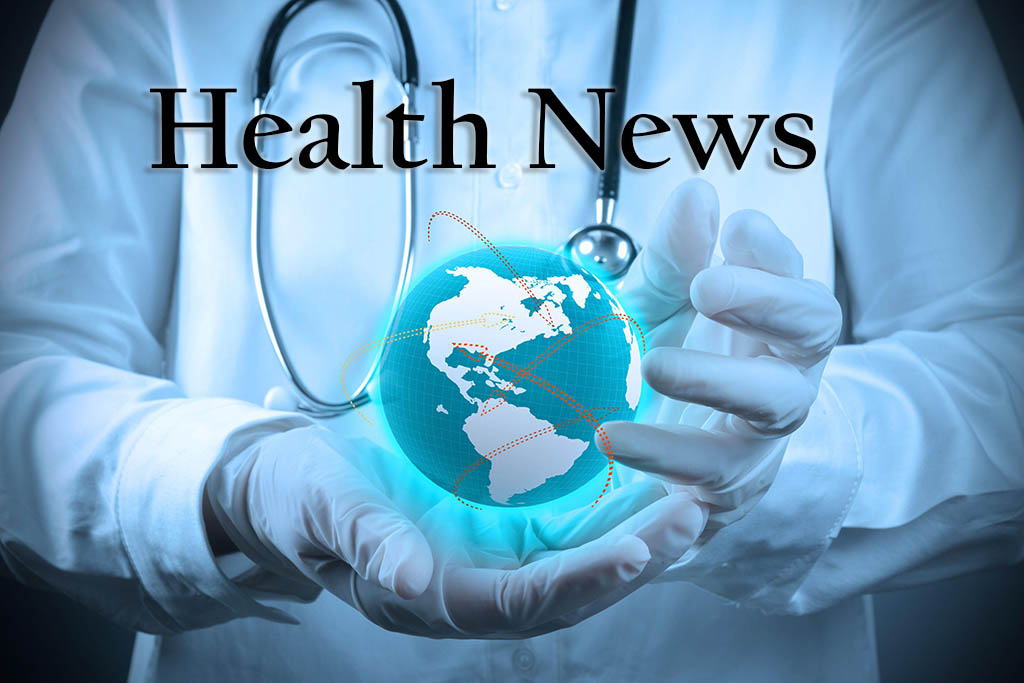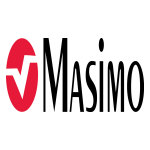Dr. Augusto Sola, Masimo VP of Medical Affairs for Neonatology, Honored by the American Academy of Pediatrics with Pioneer Award

Dr. Sola Pioneered New Protocol Using Masimo SET® Pulse Oximetry That Dramatically Reduced Blindness and Eye Damage in Neonates
IRVINE, Calif.–(BUSINESS WIRE)–Masimo (NASDAQ: MASI) announced today that Augusto Sola, MD, Vice President of Medical Affairs for Neonatology at Masimo, has been awarded the 2020 Pioneer Award, Section of Neonatal Perinatal Medicine, by the American Academy of Pediatrics (AAP). The honor recognizes the groundbreaking achievements and contributions Dr. Sola has made, using his Masimo SET®-based protocol, to improve the health and well-being of newborn infants.
Dr. Sola’s impressive career in neonatology has improved the lives of countless newborns in the U.S., Latin America, and across the world. Dr. Sola’s innovative research on oxygen administration and monitoring oxygen saturation in preterm infants has played a key role in reducing the rate of neonatal blindness (retinopathy of prematurity) and our understanding of the impact of various neonatal practices on the developing brain. Dr. Sola has published 130 original articles in peer-reviewed journals, 390 review articles, and 5 neonatology textbooks, as well as delivered more than 3,500 lectures to research and clinical groups around the world. Dr. Sola also founded the Ibero-American Society of Neonatology (SIBEN), dedicated to continuous quality improvement in neonatal care throughout the Americas.
Dr. Sola received his MD at Buenos Aires University School of Medicine and completed his Pediatric Residency and Chief Pediatric Residency at the University of Massachusetts, followed by a Neonatal Fellowship at the University of California, San Francisco. In neonatal practice since 1974, Dr. Sola has been Professor of Pediatrics at Buenos Aires University Medical School, the University of California, San Francisco, the University of California, Los Angeles, and Emory University. In addition to his position at Masimo, Dr. Sola continues to work directly with critically ill newborns.
Dr. Sola’s seminal work was done in 1998 at Cedars-Sinai Medical Center in Los Angeles. The results, published in 2003 by Drs. Sola, Wright, and Chow, showed that using a new protocol with Masimo SET®, clinicians reduced ROP to nearly zero over five years.1 Dr. Sola and colleagues later showed at Emory that the protocol’s success depended on SET® technology, as the same protocol with a competing pulse oximeter did not reduce ROP.2 Dr. Sola’s work on the reduction of ROP through oxygen saturation targeting has now become the standard of care.3-5
Dr. Sergio Golombek, MD, MPH, Professor of Pediatrics at New York Medical College, Neonatologist, Ex-President of SIBEN, and AAP member, commented, “In 1952, a Chicago newspaper wrote: ‘The best friend a baby ever had,’ referring to pediatrician Isaac A. Abt, MD, FAAP (1867-1955), founder of the AAP and its first president in 1930. He was known as a leading clinician, academic, advocate, promoter, writer, and leader. I think this has been overcome by Dr. Sola, who is, in my opinion, the best friend of a baby and his or her parents and of the many neonatal professionals and trainees whom he trained!”
Joe Kiani, Founder and CEO of Masimo, said, “We are incredibly proud of Dr. Sola, a brilliant and caring doctor whom I have had the privilege of knowing for many years. Dr. Sola’s pioneering work on the oxygen saturation of neonates has made a significant impact on the prevention of blindness in infants, and his contributions to our understanding of neonatal physiology are vast. It is only fitting that the American Academy of Pediatrics has chosen to honor him. We are grateful to benefit from his expertise at Masimo, which has been especially dedicated, ever since its founding, to improving outcomes for the youngest and most fragile patients. Congratulations, Dr. Sola, on this well-deserved recognition.”
@Masimo | #Masimo
About Masimo
Masimo (NASDAQ: MASI) is a global medical technology company that develops and produces a wide array of industry-leading monitoring technologies, including innovative measurements, sensors, patient monitors, and automation and connectivity solutions. Our mission is to improve patient outcomes and reduce the cost of care. Masimo SET® Measure-through Motion and Low Perfusion™ pulse oximetry, introduced in 1995, has been shown in over 100 independent and objective studies to outperform other pulse oximetry technologies.6 Masimo SET® has also been shown to help clinicians reduce severe retinopathy of prematurity in neonates,2 improve CCHD screening in newborns,7 and, when used for continuous monitoring with Masimo Patient SafetyNet™ in post-surgical wards, reduce rapid response team activations, ICU transfers, and costs.8-11 Masimo SET® is estimated to be used on more than 200 million patients in leading hospitals and other healthcare settings around the world,12 and is the primary pulse oximetry at 9 of the top 10 hospitals according to the 2020-21 U.S. News and World Report Best Hospitals Honor Roll.13 Masimo continues to refine SET® and in 2018, announced that SpO2 accuracy on RD SET® sensors during conditions of motion has been significantly improved, providing clinicians with even greater confidence that the SpO2 values they rely on accurately reflect a patient’s physiological status. In 2005, Masimo introduced rainbow® Pulse CO-Oximetry technology, allowing noninvasive and continuous monitoring of blood constituents that previously could only be measured invasively, including total hemoglobin (SpHb®), oxygen content (SpOC™), carboxyhemoglobin (SpCO®), methemoglobin (SpMet®), Pleth Variability Index (PVi®), RPVi™ (rainbow® PVi), and Oxygen Reserve Index (ORi™). In 2013, Masimo introduced the Root® Patient Monitoring and Connectivity Platform, built from the ground up to be as flexible and expandable as possible to facilitate the addition of other Masimo and third-party monitoring technologies; key Masimo additions include Next Generation SedLine® Brain Function Monitoring, O3® Regional Oximetry, and ISA™ Capnography with NomoLine® sampling lines. Masimo’s family of continuous and spot-check monitoring Pulse CO-Oximeters® includes devices designed for use in a variety of clinical and non-clinical scenarios, including tetherless, wearable technology, such as Radius-7® and Radius PPG™, portable devices like Rad-67™, fingertip pulse oximeters like MightySat® Rx, and devices available for use both in the hospital and at home, such as Rad-97®. Masimo hospital automation and connectivity solutions are centered around the Masimo Hospital Automation™ platform, and include Iris Gateway®, Patient SafetyNet, Replica™, Halo ION™, UniView™, UniView: 60™, and Masimo SafetyNet™. Additional information about Masimo and its products may be found at www.masimo.com. Published clinical studies on Masimo products can be found at www.masimo.com/evidence/featured-studies/feature/.
ORi and RPVi have not received FDA 510(k) clearance and are not available for sale in the United States. The use of the trademark Patient SafetyNet is under license from University HealthSystem Consortium.
References
- Chow LC, Wright KW, Sola A. Can Changes in Clinical Practice Decrease the Incidence of Severe Retinopathy of Prematurity in Very Low Birth Weight Infants? Pediatrics. 2003 Feb;111(2):339-45.
- Castillo A et al. Prevention of Retinopathy of Prematurity in Preterm Infants through Changes in Clinical Practice and SpO2 Technology. Acta Paediatr. 2011 Feb;100(2):188-92.
- Bizzarro MJ et al. Temporal Quantification of Oxygen Saturation Ranges: An Effort to Reduce Hyperoxia in the Neonatal Intensive Care Unit. J Perinatol. 2014 Jan;34(1):33-8
- Baquero H et al. Avoiding Hyperoxemia during Neonatal Resuscitation: Time to Response of Different SpO2 Monitors. Acta Paediatr. 2011 Apr;100(4):515-8.
- Sola A et al. Safe oxygen saturation targeting and monitoring in preterm infants: can we avoid hypoxia and hyperoxia? Acta Paediatr. 2014 Oct;103(10):1009-18. doi: 10.1111/apa.12692.
- Published clinical studies on pulse oximetry and the benefits of Masimo SET® can be found on our website at http://www.masimo.com. Comparative studies include independent and objective studies which are comprised of abstracts presented at scientific meetings and peer-reviewed journal articles.
- de-Wahl Granelli A et al. Impact of pulse oximetry screening on the detection of duct dependent congenital heart disease: a Swedish prospective screening study in 39,821 newborns. BMJ. 2009;Jan 8;338.
- Taenzer AH et al. Impact of pulse oximetry surveillance on rescue events and intensive care unit transfers: a before-and-after concurrence study. Anesthesiology. 2010:112(2):282-287.
- Taenzer A et al. Postoperative Monitoring – The Dartmouth Experience. Anesthesia Patient Safety Foundation Newsletter. Spring-Summer 2012.
- McGrath S et al. Surveillance Monitoring Management for General Care Units: Strategy, Design, and Implementation. The Joint Commission Journal on Quality and Patient Safety. 2016 Jul;42(7):293-302.
- McGrath S et al. Inpatient Respiratory Arrest Associated With Sedative and Analgesic Medications: Impact of Continuous Monitoring on Patient Mortality and Severe Morbidity. J Patient Saf. 2020 14 Mar. DOI: 10.1097/PTS.0000000000000696.
- Estimate: Masimo data on file.
- http://health.usnews.com/health-care/best-hospitals/articles/best-hospitals-honor-roll-and-overview.
Forward-Looking Statements
This press release includes forward-looking statements as defined in Section 27A of the Securities Act of 1933 and Section 21E of the Securities Exchange Act of 1934, in connection with the Private Securities Litigation Reform Act of 1995. These forward-looking statements include, among others, statements regarding the potential effectiveness of Masimo SET®. These forward-looking statements are based on current expectations about future events affecting us and are subject to risks and uncertainties, all of which are difficult to predict and many of which are beyond our control and could cause our actual results to differ materially and adversely from those expressed in our forward-looking statements as a result of various risk factors, including, but not limited to: risks related to our assumptions regarding the repeatability of clinical results; risks related to our belief that Masimo’s unique noninvasive measurement technologies, including Masimo SET®, contribute to positive clinical outcomes and patient safety; risks related to our belief that Masimo noninvasive medical breakthroughs provide cost-effective solutions and unique advantages; risks related to COVID-19; as well as other factors discussed in the “Risk Factors” section of our most recent reports filed with the Securities and Exchange Commission (“SEC”), which may be obtained for free at the SEC’s website at www.sec.gov. Although we believe that the expectations reflected in our forward-looking statements are reasonable, we do not know whether our expectations will prove correct. All forward-looking statements included in this press release are expressly qualified in their entirety by the foregoing cautionary statements. You are cautioned not to place undue reliance on these forward-looking statements, which speak only as of today’s date. We do not undertake any obligation to update, amend or clarify these statements or the “Risk Factors” contained in our most recent reports filed with the SEC, whether as a result of new information, future events or otherwise, except as may be required under the applicable securities laws.
Contacts
Media Contact:
Masimo
Evan Lamb
949-396-3376
elamb@masimo.com


